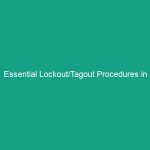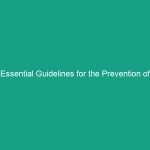Introduction
Good morning team! Today, we’re going to discuss something incredibly important: Essential Safety Audits and Checks. These processes are vital to maintaining a safe work Environment and ensuring that we all go home in one piece at the end of the day. Understanding and implementing these audits can significantly reduce risks and enhance our Safety culture.
Understanding Essential Safety Audits and Checks
Essential Safety Audits and Checks refer to systematic evaluations of safety protocols and practices within our workplace. These audits help identify potential Hazards, ensure compliance with safety Standards, and foster a culture of safety among employees. Regular audits not only protect us but also enhance productivity by minimizing disruptions caused by accidents.
Many people mistakenly believe that safety audits are just another paperwork exercise. However, these audits are crucial for identifying and mitigating risks that could lead to serious injuries or even fatalities. Ignoring this aspect of Workplace Safety could have devastating consequences.
Key Hazards, Risks, and Safety Considerations
Incorporating safety audits into our routine can help us identify several key hazards, including:
- Inadequate Training: Employees must be trained on safety protocols to effectively implement them.
- Equipment failure: Regular checks can identify worn-out tools and machinery that pose safety risks.
- Environmental hazards: Audits can reveal unsafe conditions like spills or clutter that could lead to slips and falls.
Real-world consequences of neglecting these checks can be severe. For example, a single incident of equipment failure can lead to serious injuries, legal ramifications, and financial losses. Understanding these hazards is the first step towards ensuring a safe workplace.
Best Practices, Procedures, & Actionable Advice
To effectively implement safety audits, consider these Best Practices:
- Establish a schedule: Regularly scheduled audits (monthly, quarterly) ensure that safety checks are conducted consistently.
- Involve employees: Encourage team members to participate in audits; they often have valuable insights into potential hazards.
- Document findings: Always document audit results and follow up on corrective actions taken.
For instance, in a recent audit at our facility, we discovered that several Safety Goggles were damaged and not replaced in time. This oversight could have led to serious eye injuries. By addressing the issue immediately, we ensured that all employees had the necessary protective gear.
Step-by-Step Safety Procedures
Here’s a simple step-by-step procedure for conducting an effective safety audit:
- Preparation: Gather necessary documents, safety checklists, and assign roles for the audit team.
- Walkthrough: Conduct a physical walkthrough of the facility, noting any hazards or areas of concern.
- Interviews: Speak with employees about their safety concerns and suggestions.
- Reporting: Compile findings into a report and discuss them with the team.
- Action Plan: Develop an action plan to address identified issues and assign responsibilities.
Regulations, Standards, and Compliance
Compliance with safety Regulations is not just a legal obligation but a moral one. Familiarize yourself with relevant standards such as OSHA regulations, which set the baseline for Workplace Safety. Non-compliance can lead to severe penalties, including fines and increased insurance costs.
Moreover, maintaining compliance protects employees and enhances the company’s reputation. When we prioritize safety, we demonstrate our commitment to providing a secure workplace for everyone.
Employee Engagement & Discussion
Let’s engage in a discussion. What challenges have you encountered in following safety protocols? Are there areas where you think our audits could improve? Your feedback is invaluable in creating a safer work environment.
Conclusion & Key Takeaways
In summary, essential safety audits and checks are critical for minimizing risks and ensuring a safe workplace. By understanding the importance of regular audits, recognizing potential hazards, and following Best Practices, we can significantly improve our safety culture.
Remember, safety is a shared responsibility. Let’s commit to making it a priority in our daily operations. Thank you for your attention and for your ongoing commitment to creating a safe working environment. Together, we can avoid critical risks and ensure our safety every day!


